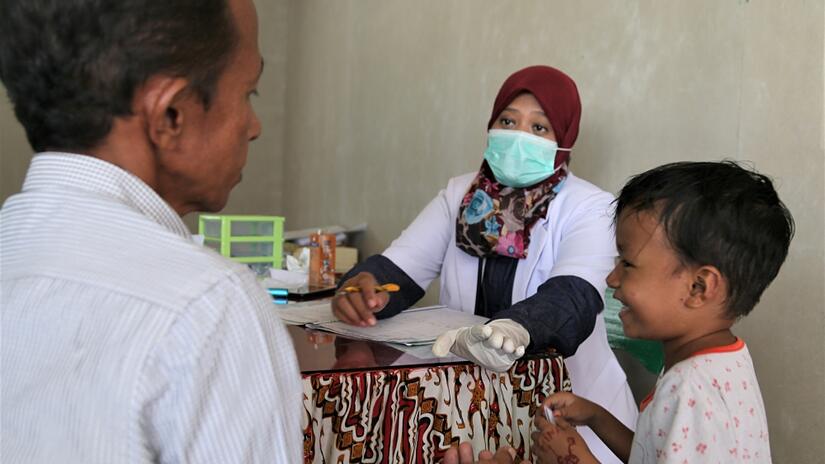Palu/Jakarta/Kuala Lumpur, 28 September 2020 – Two years after an earthquake and tsunami struck communities in Central Sulawesi, Indonesia, thousands of survivors face a severe socio-economic crisis caused by the COVID-19 pandemic.
The September 28 earthquake triggered a three-meter high tsunami and soil liquefaction that left more than 4,100 people dead and some 110,000 houses damaged or destroyed. Indonesian Red Cross Society volunteers from the affected areas were the first to respond, and staff and volunteers from all over Indonesia have been involved in the two-year relief and recovery effort.
This massive operation involving government and multiple agencies has also faced challenges. While many displaced people have alternative accommodation, they are often living with relatives due to widespread destruction of residential areas, the huge scale of people displaced, and most recently COVID-19.
Limited employment opportunities in the area due to damage caused to local industry have been compounded by social restrictions across Indonesia. The Regional Development Planning Agency reports that the impact of the COVID-19 pandemic has been worse for the local economy than the disaster two years ago.
Secretary General of Indonesian Red Cross (PMI), Sudirman Said, explained:
“Over the last two years, Indonesian Red Cross has been delivering emergency and recovery programs to people in Sulawesi, adjusting in the past six months to protect people from COVID-19 while expanding scope to support those affected by the disasters and who are facing even more hardships due to the pandemic.”
“Throughout the province, hundreds of COVID-19 cases have been reported placing families in jeopardy due to cramped living conditions and crowded homes. We are adapting to these new needs and challenges.”
International Federation of Red Cross and Red Crescent Societies (IFRC) supported Indonesian Red Cross assistance for affected communities has included emergency healthcare for 17,600 people; close to 22 million liters of water has been distributed to over 70,000 people; health promotion activities and psychosocial support have helped to keep 14,000 people safe and well. In the recovery phase, PMI and IFRC are on pace to provide cash assistance to more than 10,000 families (40,000 people) amounting to around CHF 4 million in direct cash transfers.
Jan Gelfand, IFRC Head of Country Cluster Support Team for Indonesia and Timor-Leste, said:
“After Tsunami Aceh & Nias, this has been the biggest Indonesian Red Cross relief and recovery operations and local teams have achieved a tremendous amount in some of the most challenging circumstances to help communities recover from this triple disaster over the past two years.”
About IFRC
IFRC is the world’s largest humanitarian network, comprising 192 National Red Cross and Red Crescent Societies working to save lives and promote dignity around the world.
www.ifrc.org - Facebook - Twitter - YouTube
Press release
Red Cross swings into action immediately after Japan earthquake
Red Cross swings into action immediately after Japan earthquake
| Press release

